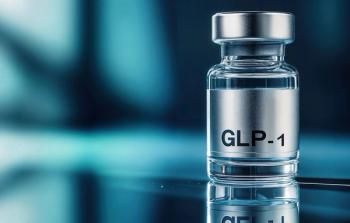
The “Value” of Rx’s Under Obamacare
In the wake of last week’s declaration by new HHS Secretary, Sylvia Burwell, that “Obamacare is working”, it’s probably time for American Rx product managers and marketers to step back and consider where we have travelled since January 1st of this year.
In the wake of last week’s declaration by new HHS Secretary, Sylvia Burwell, that “Obamacare is
- To begin, there have been start/stops with the
state exchanges that are responsible for providing Rx formulary offerings. Some appear to be running smoothly (CA); but there are also others, (OR), that are not.
- There was the
battle over the Rx products that were to be included in the revamped Part D Drug Program “6 protected classes”. Although the concept eventually was dropped in the wake of howls of protest from patient groups, the memory of this attempt to dramatically limit the number of drugs that Part D would cover, lingers.
- And, of course, there are the continued
rumors that the Administration is going to force the industry to provide rebates on all the drugs sold through the Medicare Part D program. The last episode featuring this idea was experienced during the debate over the 2014 Federal Budget.
In short, for the U.S. brand name drug industry, it’s fair to say this first year of Obamacare has been a year with more than a little bit of confusion, a lot of uncertainty, and yes, some serious angst about how all the moving parts of Obamacare Rx program will actually impact the U.S. pharmaceutical business. The “Value” of Rx’s Threading through all of these “early day” Obamacare concerns, however, there does appear to be one angle that really has become central to the provision of Rx drugs under the new program and that is the “value proposition”. As Secretary Burwell stated last week, one of the major points of progress this year has been:
“Improving quality for patients and spending dollars wisely - We’re changing incentives to move from volume-based - to a
What has this meant for the Rx industry? Well, in the course of about 24 months, I would suggest the American drug business has effectively been turned upside down and given a pretty good shaking. And this “value” phenomenon is not only happening in the various public realms of Obamacare; it’s also occurring in the private sector. How has this “value proposition” manifested itself? As summarized in an interesting
- “Bundled payments” for public and private Rx pharmaceutical care
- “Accountable Care Organizations” that are dedicated to the proposition of “value” and focused heavily on the delivered “value” the provided Rx pharmaceuticals offer to their patients
- The application of “CER”, or comparative effective research, every time a pharmaceutical marketer attempts to probe new patient utilization opportunities
- And, of course, the “mother of all Rx values”… “Evidence Based Medicine”, or the process which determines if an Rx is worth providing to patients at all.
Collectively, all of these activities have one thing in common. They are all linked to the actual, measureable “performance” of each prescription drug. And this is happening because of public and private pressure to reduce the cost of Rx care, without reducing overall efficacy or positive outcomes. So, is any of this ringing a bell? No doubt it is. And here’s the real question for this discussion: Do any of these “value” driven changes really surprise you? If they do, they shouldn’t. The 2010 Obamacare law, according to
- Benefits- (efficacy, safety, risk/benefit analysis)
- Cost effectiveness- (Impact of therapy on provision of medical service)
- Consumer Quality of life
- Consumer satisfaction
- Convenience and compliance
- Relative total value compared with other management options
Now, thinking about the controversial Sovaldi, let’s quickly walk through this list of “values” to see how the drug stacks up:
- Benefits?
In terms of
- Cost Effectiveness?
And cost effectiveness, particularly versus other medical services that may be needed to manage the disease? A recent Milliman
- Consumer Quality of Life?
Answering the quality of life question is pretty simple. The patient takes the full 12 week course of the drug-and avoids an eventual need for the liver transplant as mentioned above. And then what happens? 90/95% of the time the patient gets 100 percent well, and returns to a normal quality of life. Amazing.
- Consumer Satisfaction?
I don’t want to overstate it, but if you are a Hep C patient who has been working through years of interferon shots, various diets, and all the rest, and not realizing any positive therapeutic result or diminution in your disease, I guess it is a dumb question to even ask if you would be “satisfied” with a complete cure.
- Convenience and Compliance?
Well, again, the old interferon treatments included endless shots and pretty severe side effects. Sovaldi’s delivery is oral and recommended at one per day. That’s convenient, no doubt. Compliance will always be a personal patient issue, but my guess is if a long suffering Hep C patient is realizing an improvement in his/her health after just a few weeks to therapy, especially after dealing with the Hep C illness for years, compliance will be very high.
- Relative total value compared with other management options?
Frankly, if you can’t see the “relative total value” of this product in all of the above points, versus other management options that were in place prior to the arrival of Sovaldi, you may want to read all of these again. In sum, I would suggest Sovaldi is pretty much a total “value” slam dunk. So, if you concur with this “value” summary, is it not possible that Sovaldi, even at $84,000 per therapy, is exactly the type of “value” proposition that Obamacare seeks? Is this remarkable pharmaceutical result of innovative American R and D not precisely what the Patient Centered Research Institute (PCORI) will be looking for when it makes its recommendations and guides the Independent Payment Advisory Board (IPAB) as it begins to make macro health decisions for the nation? Further, is it not possible that Gilead, the makers of Sovaldi, rather than being the pharmaceutical “pirates” that the media has made them out to be, may in fact, have taken the entire Obamacare “value” premise to a new level of operational success? That is, all the “value” evaluations that Obamacare wants to instill in American medicine are concisely presented by Gilead in their presentation of the Sovaldi “value” package. And really, if you think about it, the future of the American pharmaceutical industry is perhaps now actually being defined by this new, tremendously successful, high “value” Rx product. So, in fact, will not more and more Sovaldi-like products be needed to rein in out-of-control U.S. healthcare costs? Strange, I know – but this would seem to be the logical conclusion if you appreciate the “value” of Rx’s under Obamacare.
October 1, 2014
Tom NortonNHD Smart Communications of Illinois, Inc.
Newsletter
Lead with insight with the Pharmaceutical Executive newsletter, featuring strategic analysis, leadership trends, and market intelligence for biopharma decision-makers.





